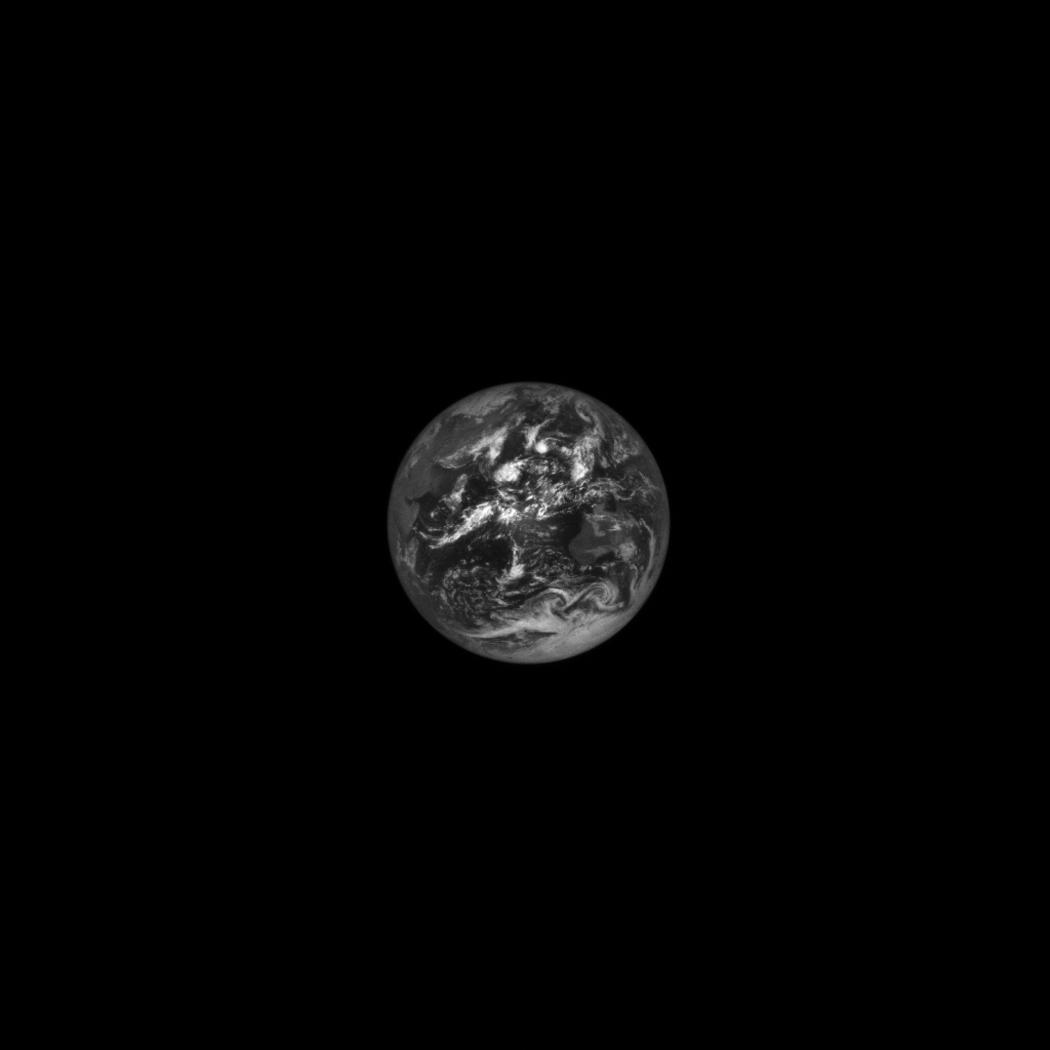We may take it for granted, but every day we receive picture postcards from the robotic travelers we have sent out to explore our Solar System. Usually, we get to see faraway planets, moons, asteroids, or comets. But sometimes we get to see ourselves.
The Lucy spacecraft took a couple of amazing images of our home planet as the spacecraft was approaching Earth for the first of three slingshot gravity assists on its way out to explore the Trojan asteroids along Jupiter’s orbit.
The first image, above was taken on October 15, 2022 from a distance of 620,000 km (380,000 miles) by Lucy’s Terminal Tracking Camera (T2CAM) system, a pair of identical cameras that are responsible for tracking the asteroids during Lucy’s high speed flybys when it reaches Jupiter’s orbit. The flyby had Lucy coming closer to Earth than many Earth orbiting satellites, including the International Space Station. It was close enough that observers in Western Australia were able to track Lucy from the ground on October 16th.
The second photo, below, shows both Earth and the Moon and was taken on October 13, 2022 as Lucy approached Earth, from 1.4 million km (890,000 miles). You’ll need to look closely to see the Moon, as the Moon is less reflective than the brighter and bigger Earth. Both images were taken as part of an instrument calibration sequence.

Lucy launched on October 19 of last year, and so is currently one year into its twelve-year voyage. This gravity assist will place Lucy on a two year orbit, at which time it will return to Earth for a second gravity assist. That second assist will give Lucy the energy it needs to cross the main asteroid belt and observe the asteroid DonaldJohanson, and travel into the leading Trojan asteroid swarm. There Lucy will fly past six Trojan asteroids: Eurybates and its satellite Queta, Polymele and its yet unnamed satellite, Leucus, and Orus. After that tour, Lucy will return to Earth for a third gravity assist in 2030 to increase the spacecraft’s inclination for the final rendezvous with the binary asteroid pair Patroclus/Menoetius. This is a record-breaking tour for a single spacecraft, visiting nine asteroids.
The mission is named after the Lucy hominin fossils, and the view of Earth in the first image includes a view of Hadar, Ethiopia, where the 3.2 million-year-old human ancestor fossil was found. The name Lucy was chosen because study of the trojans could reveal the “fossils” of planet formation, the materials that clumped together in the early history of the Solar System to form planets and other bodies.

